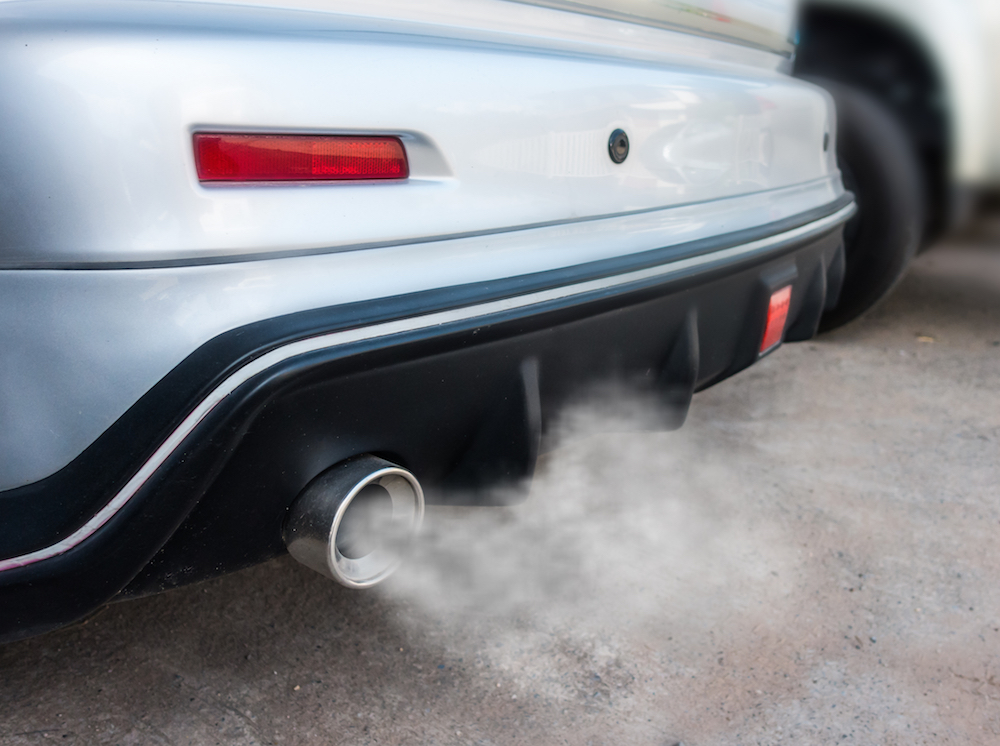
Gas-powered vehicles that use cleaner technology may still be spewing tons of harmful chemicals into the atmosphere, new research suggests.
Newer "greener" vehicles are equipped with technology that traps most particulate matter and mostly emit vapors. However, those vapors may still chemically react with other compounds in the atmosphere to form pollutants — it may just take a little while longer, according to a new study. [The 10 Most Polluted Places on Earth]
Air pollution
When cars combust gasoline, they produce a mixture of vapor, teensy droplets and miniscule solid particles that leave a vehicle's exhaust pipe and rise up into the atmosphere. The solid particles, called primary organic aerosols, are what most people thnk of when they picture the sooty black particles belching from a stinky tailpipe. Some of these particles are less than about 2.5 micrometers in diameter, small enough to burrow deep into a person's lungs and even circulate in the bloodstream, according to the Environmental Protection Agency. These particles have been tied to heart and lung problems, according to a 2006 study in the Journal of Air & Waste Management Association. However, secondary organic aerosols (SOAs), which can form in a chemical reaction between sunlight and organic compounds from tailpipes, trees, and power plants, may also have an effect on health, according to the EPA.
In recent years, stricter emissions guidelines have dramatically reduced the amount of primary organic aerosols that cars can emit. But it wasn't clear how this would ultimately affect the formation of secondary compounds that could still harm health.
To find out, Allen Robinson, a mechanical engineer at Carnegie Mellon University in Pennsylvania and director of the EPA-funded Center for Air, Climate and Energy Solutions, and his colleagues put a fleet of 59 cars into a smog chamber. The cars were different ages and spanned a range of different emissions standards, from being low-emitting vehicles to super-ultra-low-emitting vehicles, which means they produce 90 percent fewer emissions than the average vehicle. The team found that newer vehicles produced less emissions overall. But when they delved further, they found that the formation of SOAs didn't drop as steeply as the total emissions coming from the tailpipe.
For instance, when they tested vehicles that slashed primary aerosol pollution by a factor of 20 (compared with the highest emitting vehicles), the amount of SOAs formed dropped by only a factor of 3. When they looked further, they found that the relationship between SOA formation and the emissions was very complicated, and it was affected by the individual compounds formed in the combustion process — even though the effect of only a handful of these individual compounds had been studied. In particular, they found that higher ratios between certain types of organic gases and nitrous oxide compounds (NOx) in the atmosphere (often from tailpipe exhaust) could negate the effects of reduced emissions.
Using computer simulations for the Los Angeles area, they found that stricter emissions standards may not produce any reduction in SOAs, they reported June 16 in the journal Proceedings of the National Academy of Sciences.
Sign up for the Live Science daily newsletter now
Get the world’s most fascinating discoveries delivered straight to your inbox.
"Overall, we found that new and stricter regulations for gasoline vehicle tailpipe emissions will not be that effective at reducing human exposure to secondary organic aerosol because of changing NOx levels," co-author Robinson said in a statement. "This feedback illustrates the complex coupling between different pollutants, which must be accounted for in models used to develop control strategies."
The findings highlight just how complicated it is to predict and mitigate the negative health effects associated with fuel combustion, because all the chemicals produced may react in complex ways, the researchers noted. As a result, emissions standards should focus on both NOx and organic gases to better control pollution, the researchers wrote in the article.
Originally published on Live Science.

Tia is the managing editor and was previously a senior writer for Live Science. Her work has appeared in Scientific American, Wired.com and other outlets. She holds a master's degree in bioengineering from the University of Washington, a graduate certificate in science writing from UC Santa Cruz and a bachelor's degree in mechanical engineering from the University of Texas at Austin. Tia was part of a team at the Milwaukee Journal Sentinel that published the Empty Cradles series on preterm births, which won multiple awards, including the 2012 Casey Medal for Meritorious Journalism.









